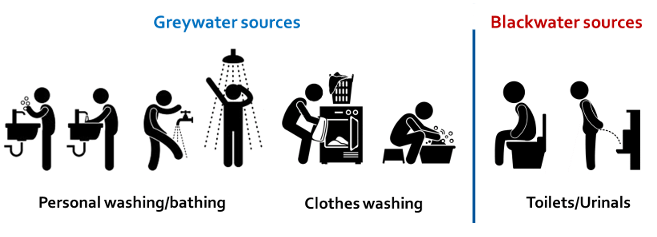Greywater (or grey water or graywater) can be defined as any wastewater, excluding sewage. Greywater is lightly-polluted and mostly carries suspended particles with negligible amount of pathogens.
Frequently Asked Questions
Most common sources of greywater include bathrooms, showers, hand basins and washing machines. Kitchen sink wastewater can also be considered as greywater.

Greywater is mildly polluted and its contaminants primarily include dirt, body hair and soap and detergent. It contains significantly fewer amount of harmful bacteria (pathogens) compared to sewage.
JalSevak Solutions provide on-site treatment and recycling of greywater. Specifically, our system uses the following processes:
- Two-stage filtration of suspended solids
- Chemical treatment and disinfection
- Aeration
- Removal of excess disinfectant by carbon treatment
A breakup of typical water consumption pattern for a household is shown. It indicates that around 25 per cent of fresh water is used for toilet flushing.
By reusing treated greywater to flush our own toilets, we can easily save this 25-30% fresh water from going down the drain and use it for better purposes! Studies have shown that greywater reuse for toilet flushing offers potential for substantial potable water savings and provides a reliable source of water.

In addition to toilet flushing, treated greywater can also be used for applications such as gardening/landscaping, floor washing, building construction, etc.
Our solution can be installed at nearly every residential or commercial facility where greywater is generated. Some examples are given below:
- Residential facilities such as individual houses, apartment buildings, affordable housing
- Public places such as community bathrooms, public toilets, swimming pools
- Commercial facilities such as resorts, event lawns, hotels, etc
- Railway and Metro stations

